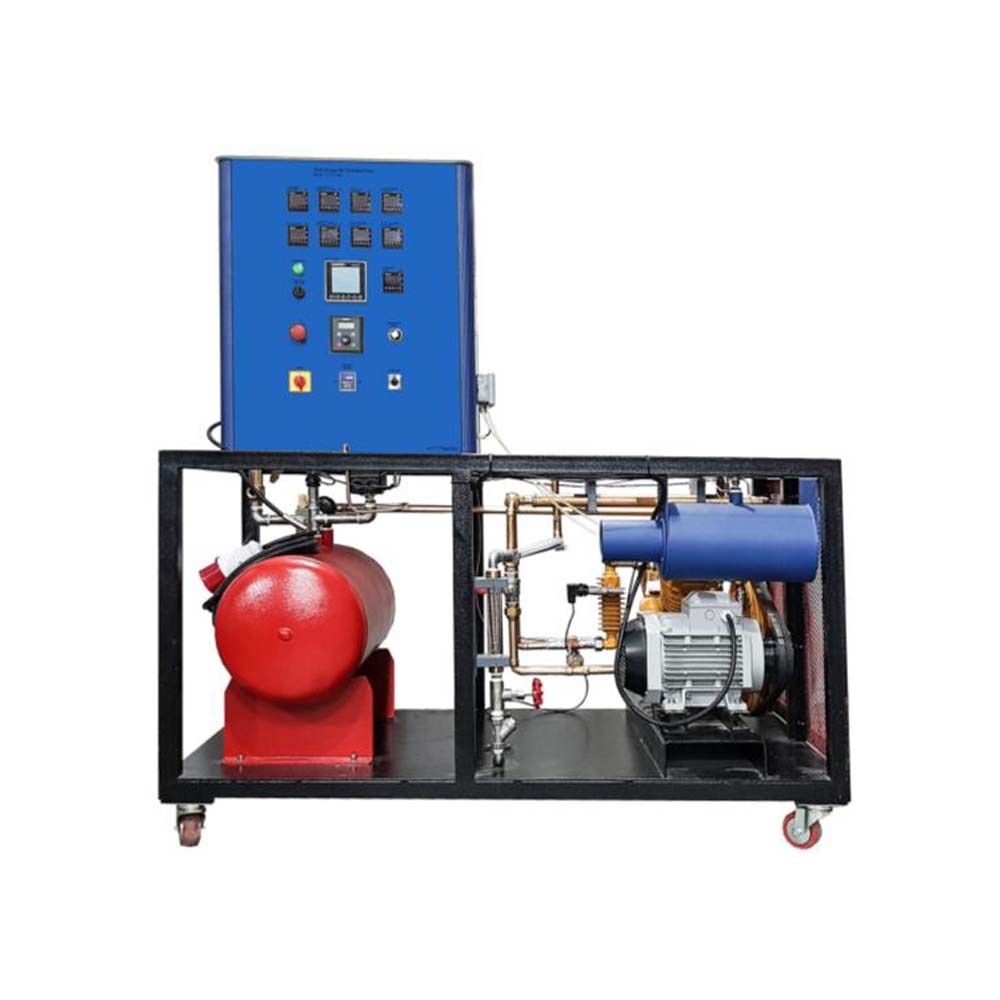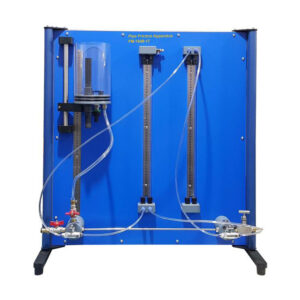In the industries compressed air is considered as an energy source. This source is generated by means of compressor. Compressors convert the supplied mechanical energy into air pressure. Compressed air has multiple uses like to drive machines, for pneumatic control systems in assembly plants or for inflation of tires and many other applications. The two stage air compressor trainer is designed to study and understand the operating and thermal studies. The unit is equipped with a high pressure two stage reciprocating with the intercooler and pressure gauges for in, middle and output stages. A water cooled intercooler is also installed between the stage to study the effect of different temperature during compression. The trainer allows the recording of compressor characteristics and representing the compression process in a p-V diagram (optional). In this trainer air is sucked form atmosphere into the intake vessel. The vessel is used to stabilize the intake pressure. Further a orifice type flowmeter is installed at the intake to measure the intake flowrate. At the discharge of the first stage the air goes through a water cooled intercooler. The intercooler stabilize the pressure by controlling temperature and feed as input to second stage. The second stage compresses the air and supply to the final storage tank. With sensors measure the pressures and temperatures in both stages as well as the electric power consumption. The measured values can be read on digital displays. At the same time, the measured values can also be transmitted directly to a PC via USB (optional).




